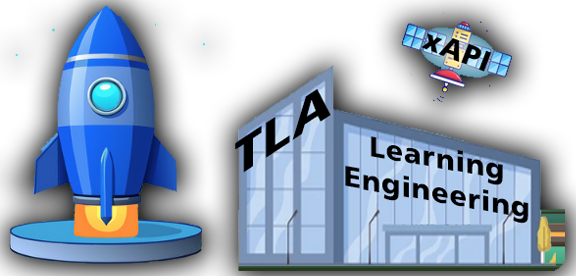Oh, the 80s! Neon leg warmers, big hair, and… clunky CRT monitors paired with Pioneer laserdisc players churning out Computer-Based Training (CBT). Those were the days when e-learning was born. The military led the charge, using CBT to train soldiers with cutting-edge (for the time) tech. Ex-military pilots, now flying for airlines, brought that CBT know-how to the aviation world. In 1988, heavyweights like Boeing, Airbus, and McDonnell Douglas formed the Aviation Industry Computer-Based Training Committee (AICC) to tackle a problem: how to make training content work across different systems.

Back then, what we now call Learning Management Systems (LMS) were known as Computer Managed Instruction (CMI). The challenge? Every vendor had their own setup. Picture this: World Institute for Computer-Assisted Teaching (WICAT) systems running on token ring networks, proprietary audio drivers, and laserdiscs that only worked with specific hardware. Add in the rise of PCs and Macs flooding workplaces, and you had a compatibility nightmare. AICC’s mission was to create standards so training content (often on CD-ROM or LANs) could be shared between systems and vendors could build to a common spec.
Fast forward, and AICC’s groundwork paved the way for modern e-learning standards. The U.S. Department of Defense’s Advanced Distributed Learning (ADL) Initiative took the baton, giving us the Sharable Content Object Reference Model (SCORM) in the early 2000s. SCORM made content reusable across LMSs, but as the internet evolved, so did our needs. Enter the Experience API (xAPI) in 2013, which tracks learning everywhere—apps, offline activities, you name it. To bring order to xAPI’s flexibility, cmi5 arrived in 2016 as an xAPI “profile” to keep LMS compatibility tight.
Here’s a quick timeline to connect the dots:
From clunky laserdiscs to today’s data-driven learning, e-learning standards have come a long way. They’ve turned proprietary chaos into interoperable magic, making training more accessible and trackable.
So, what’s your take? Have you worked with SCORM, xAPI, or cmi5? Or do you have your own 80s CBT war stories? Drop a comment below—I’d love to hear the rest of your story!

Back then, what we now call Learning Management Systems (LMS) were known as Computer Managed Instruction (CMI). The challenge? Every vendor had their own setup. Picture this: World Institute for Computer-Assisted Teaching (WICAT) systems running on token ring networks, proprietary audio drivers, and laserdiscs that only worked with specific hardware. Add in the rise of PCs and Macs flooding workplaces, and you had a compatibility nightmare. AICC’s mission was to create standards so training content (often on CD-ROM or LANs) could be shared between systems and vendors could build to a common spec.
Fast forward, and AICC’s groundwork paved the way for modern e-learning standards. The U.S. Department of Defense’s Advanced Distributed Learning (ADL) Initiative took the baton, giving us the Sharable Content Object Reference Model (SCORM) in the early 2000s. SCORM made content reusable across LMSs, but as the internet evolved, so did our needs. Enter the Experience API (xAPI) in 2013, which tracks learning everywhere—apps, offline activities, you name it. To bring order to xAPI’s flexibility, cmi5 arrived in 2016 as an xAPI “profile” to keep LMS compatibility tight.
Here’s a quick timeline to connect the dots:
Year | Standard | What It Did |
| 1988 | AICC | Standardized CBT for aviation, enabling content sharing across LANs and CD-ROMs. |
| 2001 | SCORM 1.2 | Made content “sharable” across LMSs with simple tracking (completion, scores). |
| 2004 | SCORM 2004 | Added sequencing for complex course navigation, still LMS-focused. |
| 2013 | xAPI | Tracked learning experiences anywhere (mobile, offline) with flexible data. |
| 2016 | cmi5 | A xAPI "Profile" that combines SCORM’s LMS structure with xAPI’s rich tracking for modern needs. |
From clunky laserdiscs to today’s data-driven learning, e-learning standards have come a long way. They’ve turned proprietary chaos into interoperable magic, making training more accessible and trackable.
So, what’s your take? Have you worked with SCORM, xAPI, or cmi5? Or do you have your own 80s CBT war stories? Drop a comment below—I’d love to hear the rest of your story!
Last edited:
